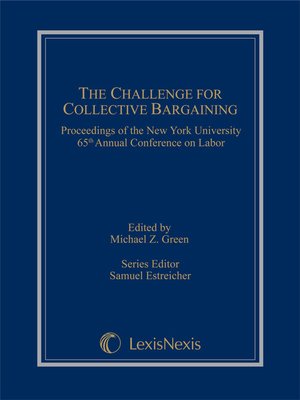The Challenge for Collective Bargaining
ebook ∣ Proceedings of the New York University 65th Annual Conference on Labor
By Michael Z. Green

Sign up to save your library
With an OverDrive account, you can save your favorite libraries for at-a-glance information about availability. Find out more about OverDrive accounts.
Find this title in Libby, the library reading app by OverDrive.



Search for a digital library with this title
Title found at these libraries:
| Loading... |
In both the private and public sectors, there has been political and economic debate about the pros and cons of collective bargaining with labor unions. During these difficult economic times, this issue remains one of the most important workplace topics. In light of this fact, in May 2012 the Center for Labor and Employment Law New York University School of Law dedicated New York University's 65th Annual Conference on Labor Law to the examination of this subject matter. The conference, which brings together some of the leading academics and practitioners in labor and employment law, provides one of the nation's premier forums for exploring workplace law and policy. The majority of the papers in this volume were delivered at the 2012 conference, with the rest being either reprinted from earlier publications or written explicitly for this volume.
The challenge for collective bargaining during these tough economic times can arise in a number of broad contexts that are captured within the four parts of this volume. Part I focuses on private sector initiatives developed by the National Labor Relations Board ("NLRB" or "Board"). Part II of this volume reviews the merger of labor law with employment law in the private sector as collective bargaining issues are integrated with individual employee rights. Part III of this volume completes the examination of private sector labor challenges for collective bargaining by reflecting on possibilities for labor law reform. Part IV shifts the final leg of this discussion to the daunting challenges for collective bargaining being faced in the public sector.






